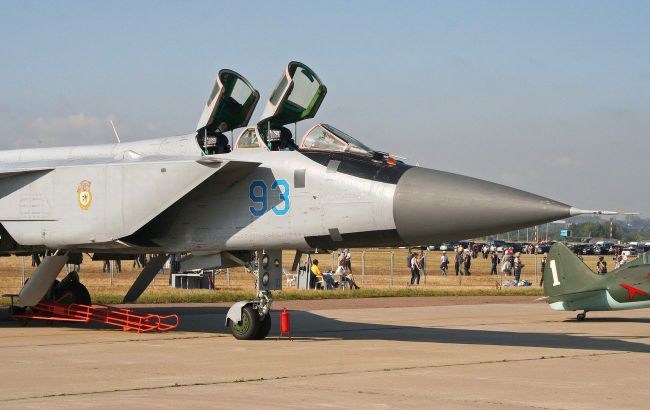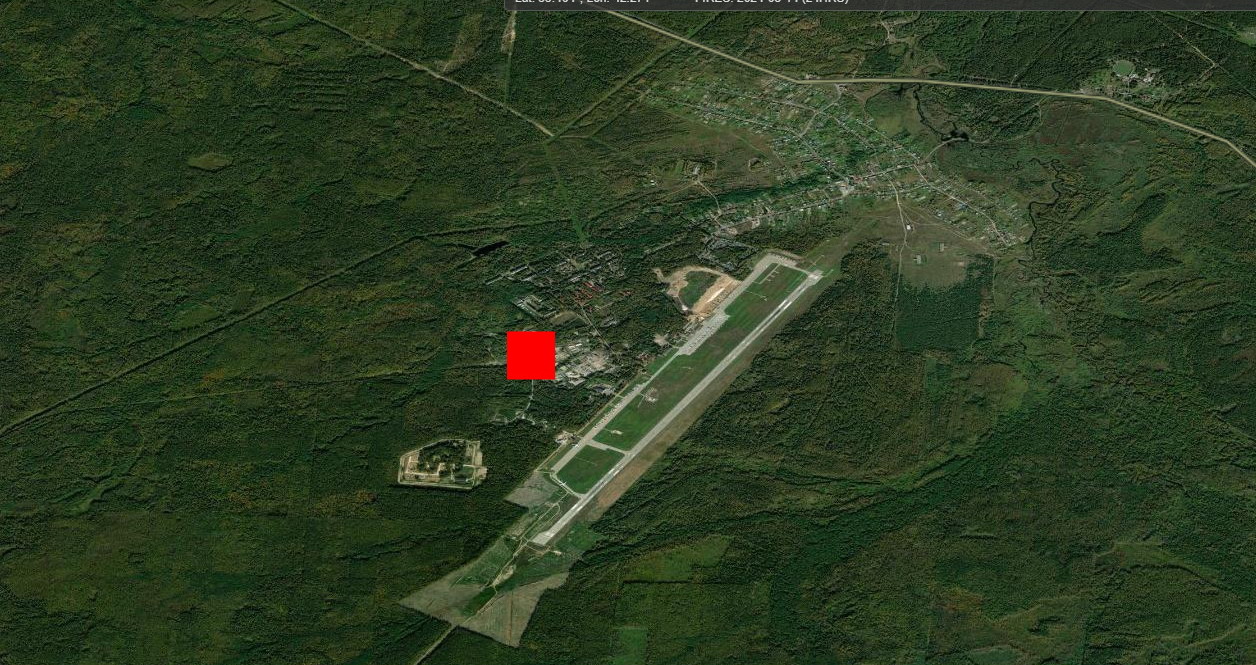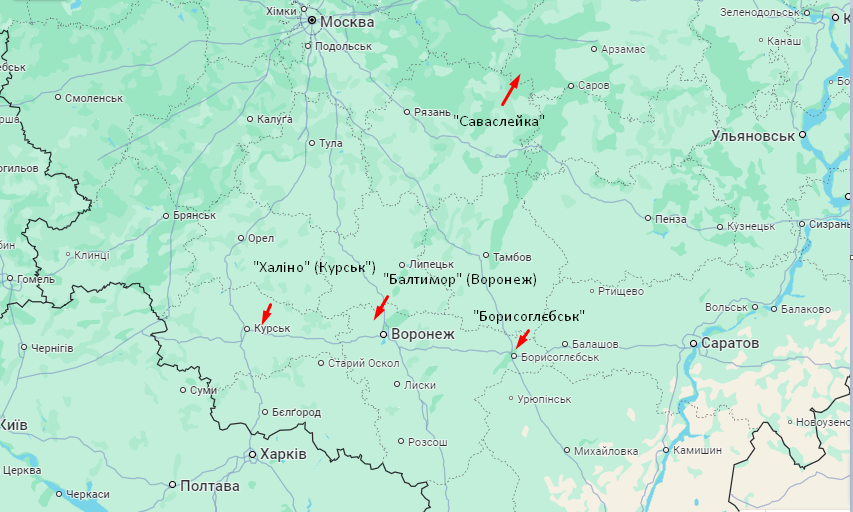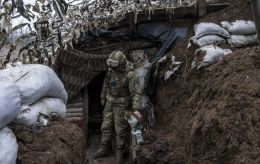What we know about Ukraine's largest attack on Russian air bases
 Photo: Russians could have lost one of their MiG-31Ks after the Savasleyka strike (wikimedia.org)
Photo: Russians could have lost one of their MiG-31Ks after the Savasleyka strike (wikimedia.org)
Drones attacked four military air bases in Russia at once on the night of August 14. The targeted air bases are Savasleyka, Baltimore, Borisoglebsk, and Kursk.
Read more details about the massive attack and its consequences below.
Contents
- How Ukrainian drones attacked Russian air bases
- Consequences of the largest air raid
- About air bases and aircraft stationed there
How Ukrainian drones attacked Russian air bases
According to the Russian ministry of defense, air defense forces allegedly destroyed more than 117 drones overnight, including almost 37 each in the Kursk and Voronezh regions, and 11 over the Nizhny Novgorod region. Three military air bases were preliminarily targeted - Baltimore (Voronezh), Borisoglebsk, and Savasleyka.
The Astra Telegram channel writes that the drones were spotted over the settlements of Veletma and Savasleyka. It cites eyewitnesses as saying that they hit the Savasleyka military air base 10 times, after which the road to the village and town of Kulebaki was blocked.
Nizhny Novgorod governor Gleb Nikitin confirmed the attack by airplane-type drones. According to him, air defense and electronic warfare systems were used to suppress the UAVs in the morning, and "measures were taken to minimize the consequences.”
Voronezh governor Aleksandr Gusev claimed that 35 drones were intercepted. The falling debris damaged residential buildings, outbuildings, vehicles, public infrastructure, and fires were reported.
Local reports indicate powerful explosions in Voronezh, accompanied by several flashpoints. According to eyewitnesses, the fire engulfed the Borisoglebsk air base, and traffic was blocked in one of the nearby villages. There are reports that the Baltimore air base could also have been targeted.
Several pro-military Z-channels confirm the attack on three airfields. According to the Fighterbomber channel, which specializes in news about combat aircraft, “unfortunately, some of them were hit effectively, but naturally.” It also says about the lack of air defense systems to protect air bases from air attacks.
According to videos posted online, the raid involved drones similar to the Liutyi attack drone.
RBC-Ukraine's sources say that the Security Service of Ukraine and the Defense Forces targeted not three, but four airfields. They call the attack the largest on Russian air bases in the course of the war.
Long-range drones organized "an explosive night" at the Voronezh, Kursk, Savasleyka, and Borisoglebsk air bases. It is a specially planned operation to prevent the enemy from using the bases to launch drone strikes on the front line and Ukrainian cities.
“The SSU continues to methodically weaken the aviation component of the Russian military machine. The aircraft still give the enemy air superiority, but we will continue to cut the wings for these 'birds',” the source said.
Consequences of the largest air raid
According to NASA's Fire Information for Resource Management System (FIRMS) satellite fire detection system, at least one large fire was detected at Savasleyka air base around 03:30 AM. According to preliminary information, fuel warehouses were on fire.

Photo: Fire at the Savasleyka air base (firms.modaps.eosdis.nasa.gov)
According to the Dnipro Telegram channel, at least one Liutyi drone hit an airplane parking lot, which, according to the images, included an IL-76 transport aircraft. It also published a video of the hit.
The Kremlevskaya Tabakerka Telegram channel reports damage to a MiG-31K supersonic fighter jet that carries Kinzhal missiles. The aircraft is beyond repair, according to preliminary data. There was an explosion and a fire after the hit. The fuel depots and two radar stations were damaged. This information has not yet been confirmed by either the Russian or Ukrainian side.
The Ukrainian drones managed to hit Savasleyka because the only air defense here is ZU-23-2 anti-aircraft guns and machine guns, Defense Express notes.
According to analysts, even the destruction of fuel depots can be quite an important result. The MiG-31 uses a specific T-6 kerosene, without which the aircraft cannot perform supersonic flights at high altitudes, which are necessary to launch the Kinzhal. The basing of the MiG-31K at Savasleyka is now in question. It does not mean that the Russians will not move them to other air bases, but in any case, this is an additional complication.
There is no information on the consequences of the attacks on Baltimore, Borisoglebsk, and Kursk.
About air bases and aircraft stationed there
The Savasleyka air base in the Nizhny Novgorod region is home to the 4th center for combat employment and retraining of personnel. The center specializes in flight training on modern aircraft.
The main type of aircraft used at this air base is the MiG-31, particularly the modification capable of carrying Kinzhal missiles.

Photo: Location of air bases (google.com/maps)
Savasleyka is located 660 kilometers out of the border with Ukraine. Each time a flight takes off, an air raid alert is announced across the country, as the Kinzhals can reach any point.
The Baltimore (Voronezh) military air base is located 175 kilometers from Ukraine in the Sovetsky district of Voronezh. The 47th bomber regiment of the 105th mixed aviation division is stationed there. The main type of aircraft is the Su-34, which is used to launch guided aerial bombs at Ukrainian positions.
According to media reports, the current attack was not the first. Before that, on May 9, 2023, the air base was attacked by a missile that was allegedly shot down by air defense systems.
Borisoglebsk is an active military air base in the Voronezh region, east of the city of Borisoglebsk, 340 km from the border with Ukraine. Currently, Su-25 and Yak-130 aircraft are based there. It is used, among other things, as a training airfield for flight crews.
Kursk (or Khalino) is a jointly operated air base near Kursk, 100 km from the border with Ukraine. It is home to Kursk-Vostochny, which has been closed since 2022, and the Khalino military air base. It is home to the 14th fighter regiment of the 105th mixed aviation division, equipped with Su-30SM aircraft, which has repeatedly carried out air and bomb strikes against Ukraine.
It has been attacked several times during the Russia-Ukraine war. For example, in December 2022, a fuel depot caught fire after a drone strike, while in August 2023, more than a dozen drones hit several aircraft and air defense systems. According to unofficial reports, four Su-30s, one MiG-29, as well as two Pantsir-S systems, and a S-300 radar station were damaged.
Sources: data from open sources, Russian Telegram channels, statements from governors of Russian regions, information from OSINT channels, RBC-Ukraine's sources in the SSU, and the specialized Ukrainian media Defense Express.

